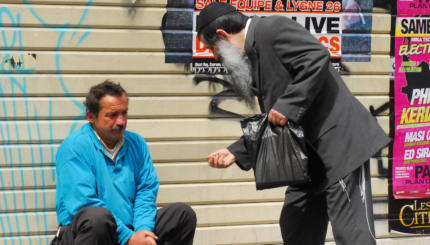I run a pretty rockin’ Bar (or Bat) Mitzvah service. I’ve officiated at several hundred of these events. I’ve been to hundreds more by some great Rabbis, but even with the warmest clergy, the best intended preparation programs, and helpful guidance of thoughtful books such as Putting God on the Guest List (by, Jeffrey K. Salkin), Bar and Bat Mitzvah celebrations are missing the mark.
The original meaning of the celebration was that a child was entering puberty, and now was responsible for the commandments. Puberty can be a tricky time, no wonder so many wise traditions developed rituals for its arrival. Age 13 boys (and 12 for girls), is the average on-set of puberty. In the Mishnah (200 CE), this corresponded to having grown 2 pubic hairs (2 is for real, 1 eh, might just be shmutz), B. Niddah 52a. As a rite of passage, dealing with the physical changes of adolescents might be meaningful. However, we live in an age where people are rightfully creeped-out by almost anybody talking about sexuality with minors. Perhaps, especially clergy. So puberty remains the elephant in the room. Even dealing with the physical and hormonal changes of becoming a teen is a topic that most clergy wouldn’t touch with a ten-foot pole.
Because we collectively fail to connect what is really happening in the life of the teen, the celebration’s meaning, both the service and party, has been diminished. When a rite of passage looses its core it can become fairly comical, think Keeping the Faith with Ben Stiller and Ed Norton, or more recently the Coen Brother’s A Serious Man. Faux-Mitzvahs have been popping up over the past few years. These are celebrations for 13 year-olds of any religion that want to celebrate the way their Jewish friends are doing. And why not? Have you heard the joke: “That was more ‘bar’ than ‘mitzvah’?”
I love the “today you are a man” speech. This kid doesn’t have a job, nor has he seriously considered how he intends on investing his 401k. Even being a little league star hardly counts as manhood. In truth, this kid is about to head into some fairly big ups and downs. Such is the nature of becoming a teenager: All the physical capabilities without the sechel (smarts) to navigate. Consider this insight from the Department of Health and Human Services:
With an immature prefrontal cortex, even if teens understand that something is dangerous, they may still go ahead and engage in the risky behavior. Recognizing the asynchrony of development of the regions of the brain helps us to see adolescent risk-taking in a whole new light. This broadened view of risk-taking and the concept of self-regulation are explored in the next section.
As my Head of School at New Community Jewish High School, Dr. Bruce Powell, says, “The car rental agencies have it right.” It turns out, you can’t rent a car until you are 25 years old, the accurate age of the end of adolescence. With brain scans, neurologists tell us that the frontal lobe continues to develop until the age of 25 (leave it to the free-market to figure it out before science). If we’re not going to deal with kids’ physical and psychic development at Bar Mitzvah, we might be wise to wait until the next, more politically correct milestone, maybe getting a driver’s license, or high school graduation. And if we want to hold onto the golden “today you are a man” line, might I suggest waiting till age 25.



